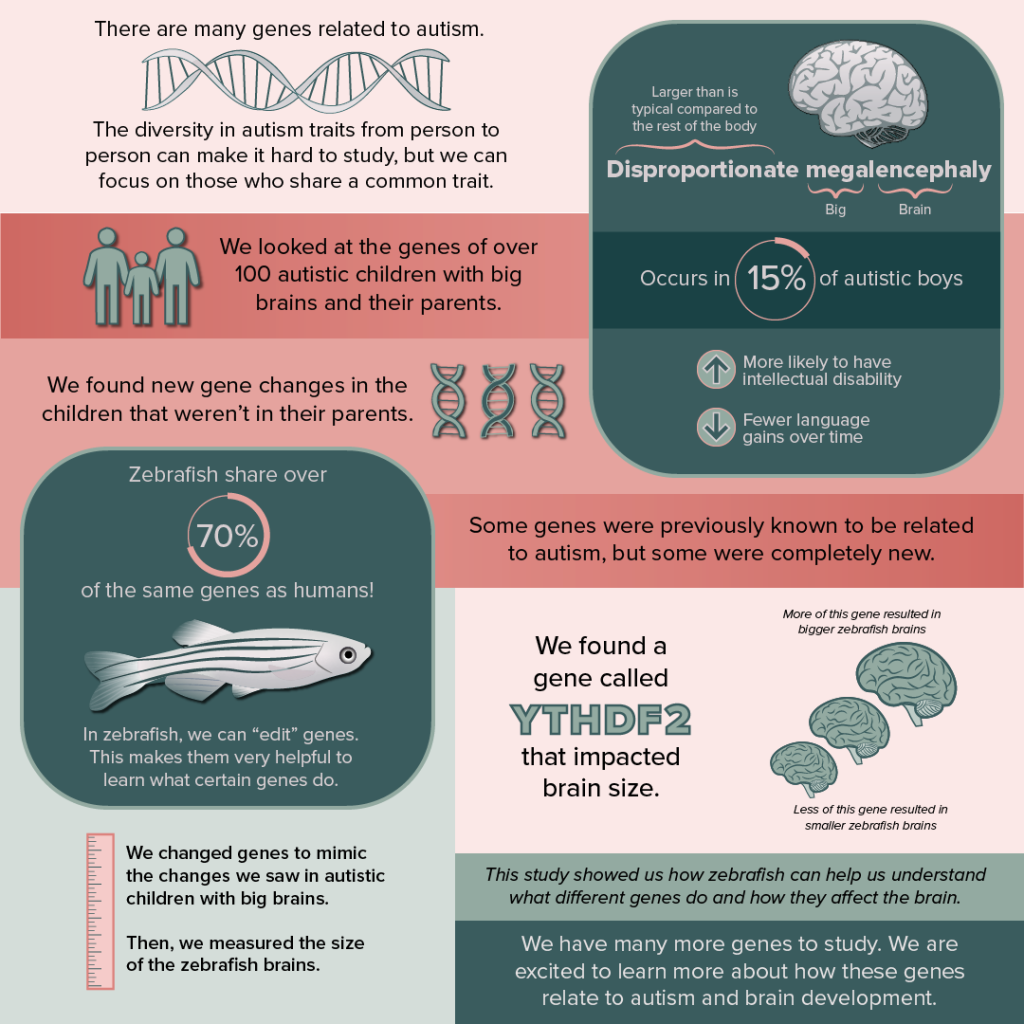
Autism is a complex neurodevelopmental condition commonly associated with difficulties or differences in communication, social interactions, and repetitive behaviors. Researchers have found that autism is largely influenced by mutations in genes; however, the diversity of traits among autistic individuals and the many genes found to be associated with autism makes it a challenge to study.
To simplify the study of autism genetics, our MIND Institute lab led by Megan Dennis, an associate professor in the Department of Biochemistry and Molecular Medicine, focused on a subtype of autism associated with larger brains. This is termed disproportionate megalencephaly, with “mega-” meaning “big” and “-enceph-” referring to the brain. In autistic individuals, this enlarged brain often translates into language regression and intellectual disability, affecting about 15% of autistic boys. Through this study, we examined the DNA of autistic individuals with enlarged brains. This analysis identified mutations in over 100 genes in children not shared with their parents (so newly arising during the process of sperm or egg production). Among these genes, some were previously known to cause autism while others were completely novel.
With so many genes, we tested the functions of some of them using a “model organism” to understand if they changed brain size and development. Different types of animals are used to understand the neurobiology of autism. In our group, we use zebrafish. Believe it or not, despite hundreds of millions of years of evolution between fish and humans, we share over 70% of the same genes! Disrupting normal gene function is performed with molecular tools, like CRISPR, that can change the DNA and mimic the mutations we identify in autistic individuals. In “mutant” zebrafish, we can then test for changes in brain size after only a few days of their birth. This makes them a useful model for testing long lists of genes.
For our study, we mutated seven genes in zebrafish and identified one called YTHDF2 that impacted brain size. The gene produces a protein that impacts certain RNAs in the cell. Mutations leading to lower amounts of the gene resulted in smaller brains in zebrafish larvae, while higher amounts of the gene produced larger brains. The autistic individual with disproportionate megalencephaly also carried a mutation that produced more YTHDF2. Interestingly, another gene with similar functions affecting RNA called YTHDC1 was identified in a separate autistic individual with enlarged brain size.
These results provide an extensive list of many genes to explore and establish the use of zebrafish as a model for autism and brain size for further study. They also present an exciting new direction focused on genes related to RNA stability and transport in autism research.
Read the full journal article (free access): https://pmc.ncbi.nlm.nih.gov/articles/PMC12123175/